Castor is botanically known as Ricinus communis, and it is an herbaceous perennial plant. It can be cultivated as an annual or perennial plant depending on the season. Fertilizers are food for soil and plants and necessities for everyone, Depending on the nature of the plant. Castor grows well on various soils and soil types; it needs specific fertilizers to improve its growth and productivity. Let’s check out more information on the best fertilizer for Castor plants.
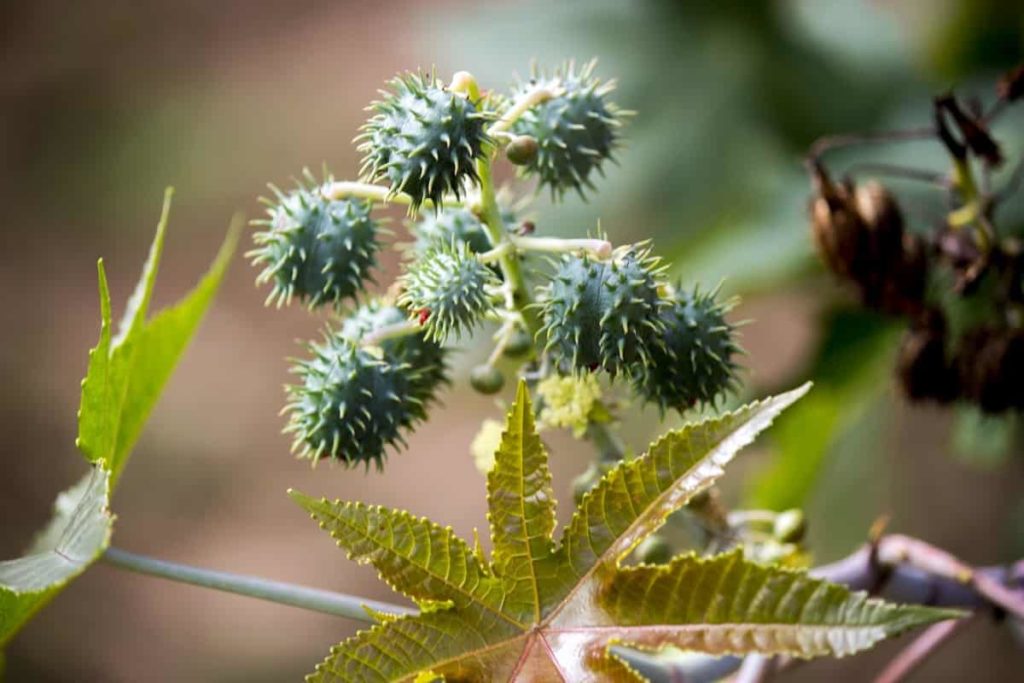
Nutrient management is based on soil test results, especially organic manures and biofertilizers. If the nitrogen fertilizer is too high, the crop becomes too succulent and suffers from pests and diseases. On the other hand, if the dosage is too low, crop growth is retarded. Therefore, farmers should apply the appropriate amount for the best results. Phosphatic fertilizers should not be used in all seasons as the residual phosphate of last season will be available for the current season.
Best fertilizer for Castor plants
Organic fertilizers
Soil, perlite, and well-decomposed organic manure with equal parts of peat make the best fertilizer for growing Castor beans. The Castor plant fertilizes once a month with an all-purpose fertilizer. When the buds begin to emerge, spread an inch of old manure or compost layer around the base of the plant. Although, as mentioned earlier, all fertilizers are essential for plant growth, and each has its nutritional benefits, organic fertilizers are undoubtedly the best for Castor plants.
Application of organic manures – Before final plowing, spread 12.5 tons per hectare of compost or FYM evenly in the main field and add soil to the soil by plowing. Apply 30 kg of sulfur per hectare through gypsum at the time of final plowing for a higher yield of Castor. Do not leave FYM or fertilizer to sunlight as nutrients will be lost.
In case you missed it: Organic Castor Seed Production – Farming
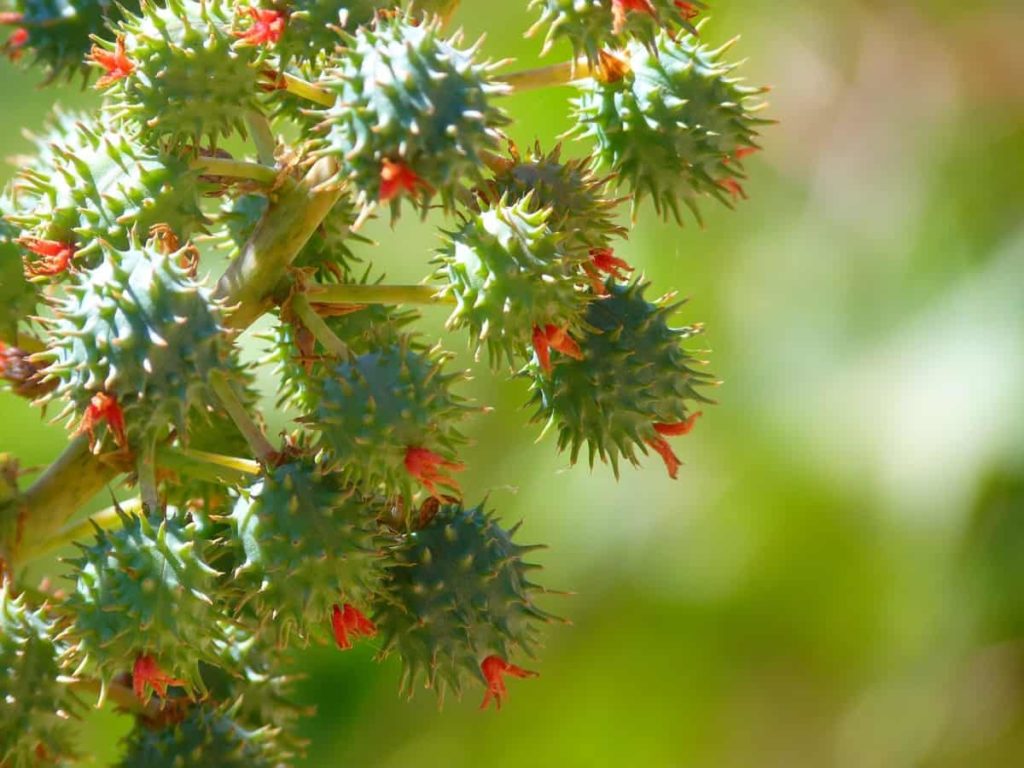
NPK fertilizers
The nitrogen fertilization had a significant effect on the number of fruits per plant, which increased quadratically as a function of the nutrients in the crop. Castor grows well on light alkaline or acidic soils. The essential element of the fertility level is the nitrogen supply in the soil. Inadequate nitrogen reduces Castor production. Conversely, excessive nitrogen promotes heavy plant growth with little or no increase in seed yield.
The amount of nitrogen required for Castor depends on the soil’s organic matter. The use of nitrogen pre-plant and side dressing may be beneficial at higher utilization rates or on lighter textured soils. Castor needs the same amount of nutrients as other low-demand field crops.
Potassium is essential in Castor bean production, as it stimulates more than 60 enzymes. Among the growth variables, only plant height and leaf area were affected by potassic fertilization, and these variables decreased and increased linearly with increasing potassium intake, respectively. Therefore, as far as possible, apply NPK fertilizers primarily by soil testing recommendations.
- Half of the N and all P and K are applied as a basic application. The remaining N is applied one month after planting.
- Castor bean requires a lot of nitrogen, especially during their early development. Unbalanced nitrogen use encourages plant growth at the expense of flower and seed formation.
The recommended fertilizer dose for Castor is 40 N-40 P-20 K kg/hectare. In addition, apply 12.5 kg ZnSO4 ha-1 (if the soil is available Zn <1.2 ppm) and 25 kg FeSO 4 per hectare (if soil available Fe <3.7 ppm for non-calcareous soils and <6.3 ppm for calcareous soils). Castor does not usually respond to phosphorus, and too much phosphorus in the soil can reduce yields. Therefore, do not apply P2O5 unless tested at or below the best level for P to be able to remove soil.
In case you missed it: Castor Cultivation Income, Yield, Project Report
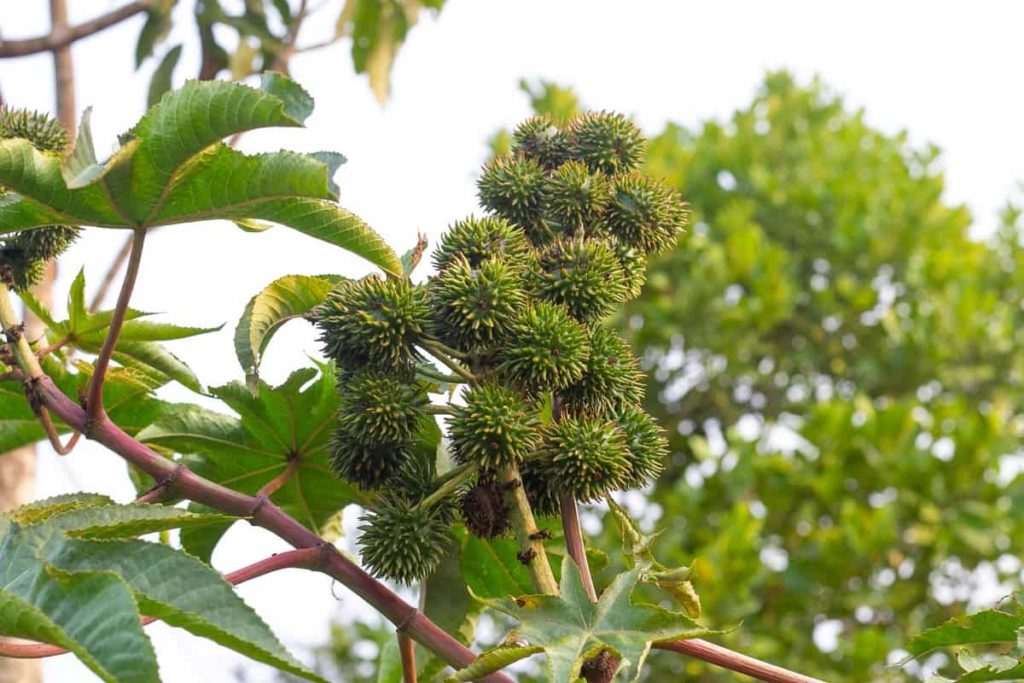
Essential nutrients for Castor crop growth
Nitrogen
- A proper supply of nitrogen is essential for optimal leaf growth.
- It promotes branching, seed set, and filling.
- Deficiency will result in poor growth, light green plants, poor branching, or poor seed arrangement.
- Nitrogen recommendations vary by region and cultivation system. Since Castor is grown in the country as both rainfed and irrigated crops, the response of applied N varies in rainfed and irrigated conditions.
- The response in rainfed farming areas varies with rainfall and its distribution.
- Topdressing with an additional 20 kg N / hectare in 35-40 and 65-70 days after sowing gives an excellent economic response after using 20 kg N / hectare as basal feed for rain-fed Castor.
- In addition to the basic dose of 40 kg N / hectare, irrigated Castor for more than 180 days requires additional N by 20 kg/hectare at each successive picking starting from 90 days or harvest the first-order spike, i.e., at intervals of 30 days.
- Avoid higher N levels than recommended, as this can result in excessive plant growth and weakening of the root system.
- For both rainfed and irrigated crops, nitrogen fertilizer should be applied in continuous bands at 5-6 cm/depth and a distance of 5-7 cm from the crop row.
Phosphorus
It is essential in cell division and new tissue development. Also, phosphorus is associated with complex energy changes in the plant. Adding phosphorus to low soil in available phosphorus promotes root growth and winter hardiness, stimulates cultivation, and accelerates maturation. It is an essential nutrient for root development. They encourage plants to plant a dense supply of new roots and strengthen existing ones as they grow. It is necessary for root growth, seed and fruit growth, and early ripening.
Phosphorus deficiency delays plant growth, root growth, and flowering. The recommended phosphorus for rain Castor varies from 15 to 40 kg P2O5 / hectare depending on soil fertility and moisture retention status. The only superphosphate soluble in water is generally preferred for Castor. In addition to phosphorus, this fertilizer also provides sulfur and calcium. The basal feed of N with whole phosphorus should be applied at the time of sowing, and the method of application is placement.
In case you missed it: Castor Cultivation Information Guide
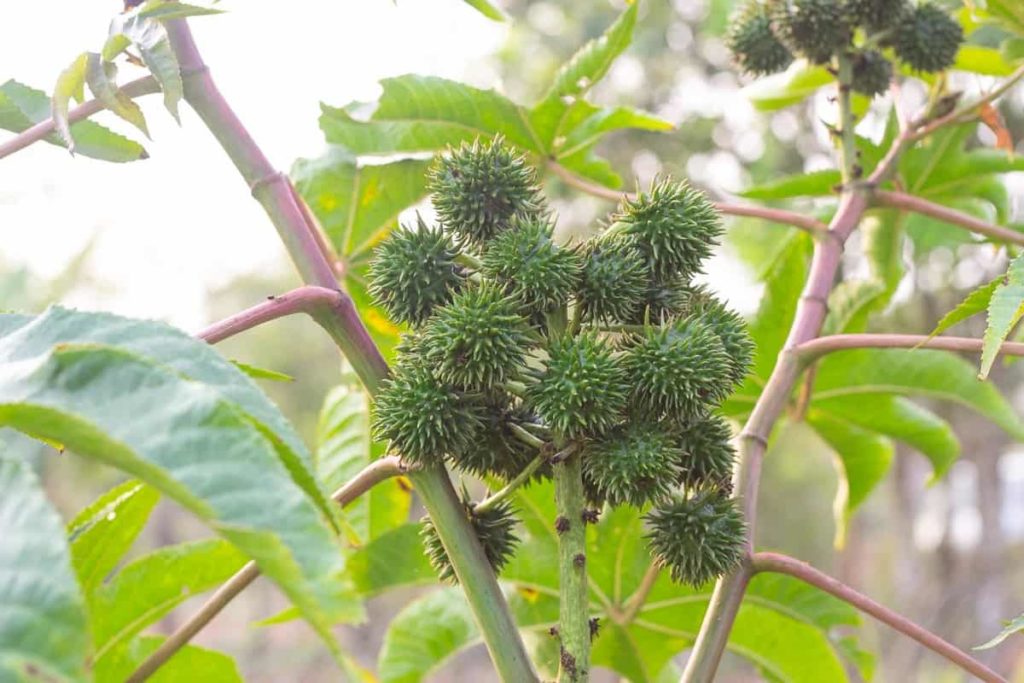
Potassium
It plays a crucial role in activating numerous enzymes that produce and transfer photosynthesis to storage organs and provide resistance to pests, diseases, and environmental stressors. It also helps in increasing the quality of the crop. The most widely used source of potassium is Muriate of Potash, as it is soluble in water and less expensive.
The recommended doses of potassium for both rain and irrigation are 20 and 40 kg K2O / hectare, respectively. In the case of rain-fed Castor beans, whole potash should be added to the basil. In the case of irrigation of Castor, half of the potassium is basal and the other half as top dressing with nitrogen.
Timing, dose, and method of fertilizer application
The distance between fertilizer and seed can vary considerably depending on the crop, soil, area, and fertilizer end. Avoid mixing fertilizer directly with the seed, or use a planter that keeps the seed and fertilizer in contact with the seedbed. It is essential with Castor seeds, whose thin testes deteriorate quickly, causing them to rot in the soil and reducing germination. Depth of soil to a pan, which impedes rooting, affects the growth of roots.
Deep fertilization also produces a deep-rooted plant that can withstand drought, but since plants can only get their essential supply and nutrients in solution, the soil in this region should be moist. This potassium allows the developing roots to reach the nutrient concentration early, thus promoting healthy development. For rainy Castor, use 20 kg N and 40 kg P205 per hectare as basal feed and then top dressing with an additional 20 kg N / hectare in 30-40 and 65-70 days after sowing gives an economic response.
In case of a dry spell during the first 50 to 55 days, apply the first top dressing N at the secondary beginning and when it is raining. In addition to the primary dose of 40 kg N and 40 Kg P205 / hectare, irrigated Castor for more than 180 days at the rate of 20 kg/hectare on each masonry starting from 90 days after the first order harvesting. Additional use of N is required. Avoid spikes, i.e., 30-day intervals, above the recommended N level, resulting in excessive plant growth and weakening of the root system.
Nutrients at pre-sowing time
Apply deep plowing in summer to break hardpan, absorb rainwater, and reach deep into roots. Based on soil test reports, Nutrients should be applied. Use well-decomposed FYM by 4-5 tons per acre or vermicompost by 2.0 tons per acre or Castor cake by 0.4 tons per acre with Trichoderma when plowing.
In case you missed it: Top Agriculture Companies in India: Best and List
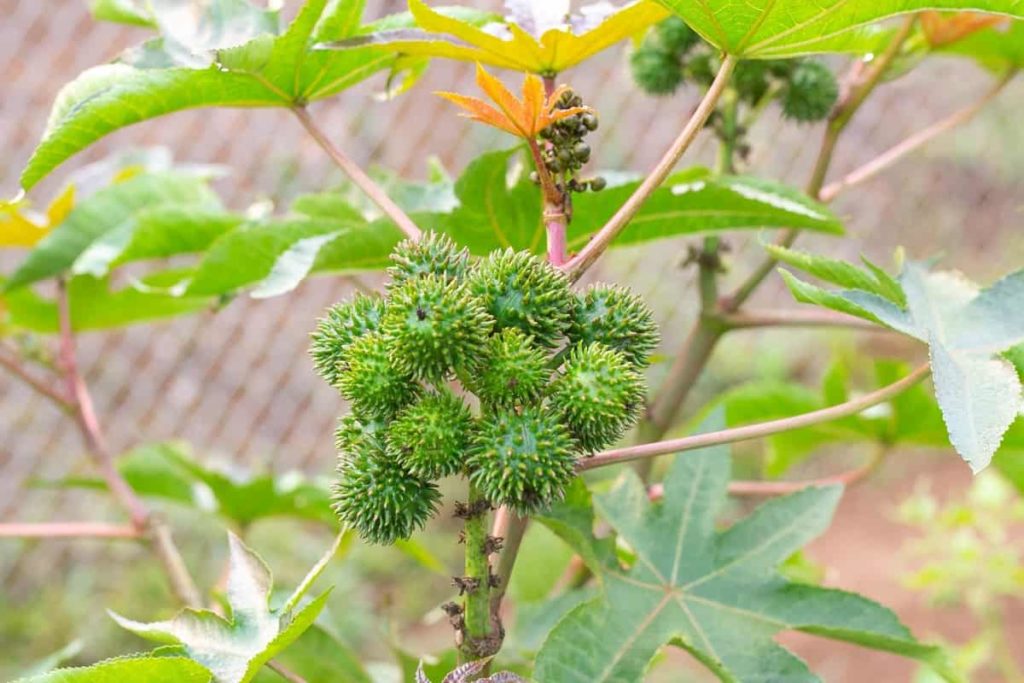
Apply vermicompost and FYM 1 week and 3-4 weeks before sowing. Do not leave FYM or compost to sunlight as nutrients may be lost. Apply 12 kg of sulfur per acre of gypsum at the time of final plowing for a higher yield of Castor.
Nutrients at seed sowing time
- Before sowing, the soil should be examined to determine its fertility of the soil. Provide nutrients by soil testing recommendations.
- Bio-Fertilizers – Seed/seedling treatment with Azotobactor and phosphorus solubilizing bacteria (PSB) should be treated by 250 gm per acre seed and VAM inoculum by 1 kg/acre.
- At sowing, apply 1/3 of N and full P&K dose as basal.
Nutrients at the vegetative stage
Apply 1/3 part of N as top dressing at the beginning of the first flowering stage at 35 to 40 days after sowing and the remaining 1/3 part 65 to 70 days after sowing with rain or irrigation.
Nutrients at the reproductive / maturation stage
Micronutrient deficiencies should be corrected with a micronutrient foliar spray. Immediately incorporate crop residues into the soil after harvesting.
Nutrition management
Fertilizers are best used based on soil test recommendations. A typical fertilizer technique is to apply fertilizer (organic fertilizer) in the individual holes of plants before sowing the seeds. Manure will help form new roots, which will help promote better anchoring. In addition, manure helps maintain soil moisture, which is beneficial for the plant, especially in the dry season.
Nutrient deficiencies in Castor
Nitrogen
Nitrogen deficiency causes yellow or light green leaves to form and the plant to stagnate. The leaves begin to fall prematurely. As a result, the seeds of crops do not reach their normal size and become shriveled and light in weight.
Correction measure – Apply 8-10 kg N / acre as a top dressing or 2-3% urea foliar spray.
Phosphorus
The phosphorus deficiency restricts the growth of roots and twigs; leaves may fall off prematurely, and flowering and fruiting may be significantly delayed. In addition, phosphorus deficiency leads to the formation of rusty brown lesions.
In case you missed it: Top 20 Seed Companies in India
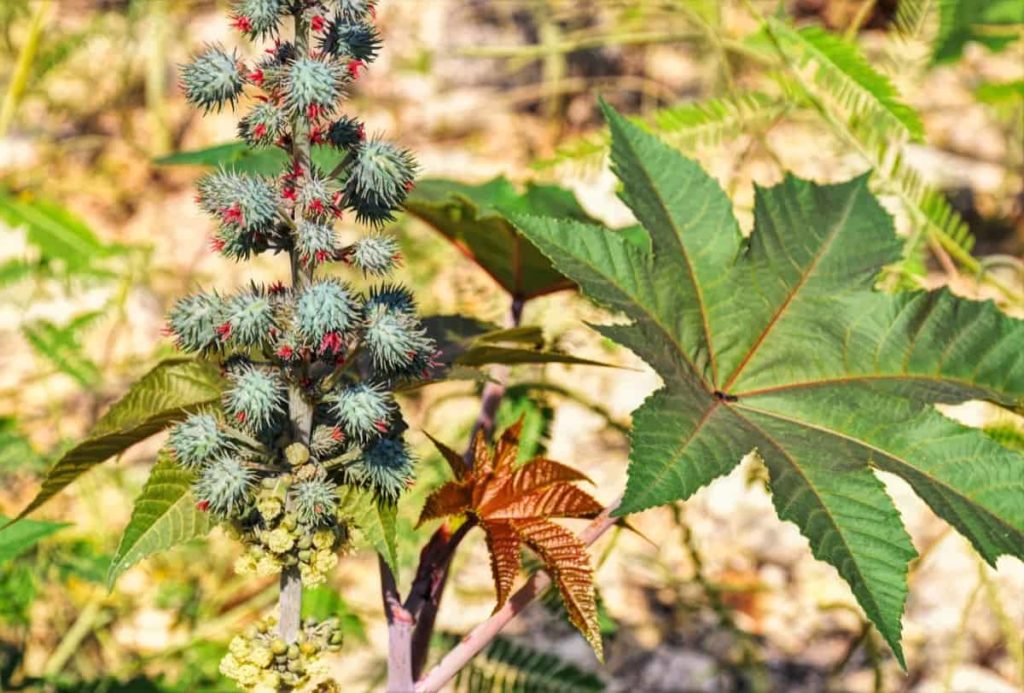
Potassium
Potassium deficiency causes stunting of the growth of internodes and bushy, leading to chlorosis, i.e., yellowing leaves and scorching of leaves. Also, it is responsible for the ‘dying back tips’ of the shoots. Finally, its deficiency reduces photosynthesis; the tubers turn black.
Calcium
Calcium deficiency causes ‘dieback’ on the tips and edges of young leaves. The average growth of plants is stopped; the roots may become small, dense, and bushy, the leaves wrinkle, and the young leaves of crops remain in pairs. In addition, the acidity of the cell sap increases abnormally, which inhibits the plant’s physical function. As a result, the plant becomes infected and eventually dies.
Magnesium
Magnesium deficiency causes the yellowing of old leaves called chlorosis. Severe magnesium deficiency also causes premature defoliation. As a result, the leaves form medium white stripes.
Sulfur
Sulfur deficiency leads to slow growth with thin stems, reducing nitrogen fixation. The young leaves turn yellow, and the roots and stems become unusually long and develop woodiness. In addition, the sulfur deficient plant produces less protein and oil.
- Economical Aquaculture: A Guide to Low-Budget Fish Farming
- 15 Common Planting Errors That Can Doom Your Fruit Trees
- How to Make Houseplants Bushy: Effective Tips and Ideas
- Innovative Strategies for Boosting Coconut Pollination and Yield
- Pollination Strategies for Maximum Pumpkin Yield
- The Complete Guide to Chicken Fattening: Strategies for Maximum Growth
- Natural Solutions for Tulip Problems: 100% Effective Remedies for Leaf and Bulb-Related Issues
- Revolutionizing Citrus Preservation: Towards a Healthier, Greener Future
- Natural Solutions for Peony Leaf and Flower Problems: 100% Effective Remedies
- Maximizing Profits with Avocado Contract Farming in India: A Comprehensive Guide
- Natural Solutions for Hydrangea Problems: 100% Effective Remedies for Leaf and Flowers
- The Ultimate Guide to Choosing the Perfect Foliage Friend: Bringing Life Indoors
- From Sunlight to Sustainability: 15 Ways to Use Solar Technology in Agriculture
- The Ultimate Guide to Dong Tao Chicken: Exploring from History to Raising
- The Eco-Friendly Makeover: How to Convert Your Unused Swimming Pool into a Fish Pond
- Mastering the Art of Delaware Chicken Farming: Essentials for Healthy Backyard Flocks
- 20 Best Homemade Fertilizers for Money Plant: DIY Recipes and Application Methods
- How to Craft a Comprehensive Free-Range Chicken Farming Business Plan
- Brighten Your Flock: Raising Easter Egger Chickens for Beauty and Bounty
- How to Optimize Your Poultry Egg Farm Business Plan with These Strategies
- Subsidy for Spirulina Cultivation: How Indian Government Schemes Encouraging Spirulina Farmers
- Ultimate Guide to Raising Dominique Chickens: Breeding, Feeding, Egg-Production, and Care
- Mastering the Art of Raising Jersey Giant Chickens: Care, Feeding, and More
- Ultimate Guide to Raising Legbar Chickens: Breeding, Farming Practices, Diet, Egg-Production
- How to Raise Welsummer Chickens: A Comprehensive Guide for Beginners
- How to Protect Indoor Plants in Winter: A Comprehensive Guide
- Ultimate Guide to Grow Bag Gardening: Tips, Tricks, and Planting Ideas for Urban Gardeners
- Guide to Lotus Cultivation: How to Propagate, Plant, Grow, Care, Cost, and Profit
- Agriculture Drone Subsidy Scheme: Government Kisan Subsidy, License, and How to Apply Online
- Ultimate Guide to Raising Araucana Chickens: Breed Profile, Farming Economics, Diet, and Care
- Bringing Hydroponics to Classroom: Importance, Benefits of Learning for School Students
- Ultimate Guide to Raising Polish Chickens: Breed Profile, Farming Economics, Diet, and Care
- Ultimate Guide to Raising Australorp Chickens: Profile, Farming Economics, Egg Production, Diet, and Care
- Silkie Chicken Farming: Raising Practices, Varieties, Egg Production, Diet, and Care
- Sussex Chicken Farming: Raising Practices, Varieties, Egg Production, Diet and Care
- Homemade Feed Formulations for Livestock: Discover Cost-effective Starter to Finisher Feed Recipes